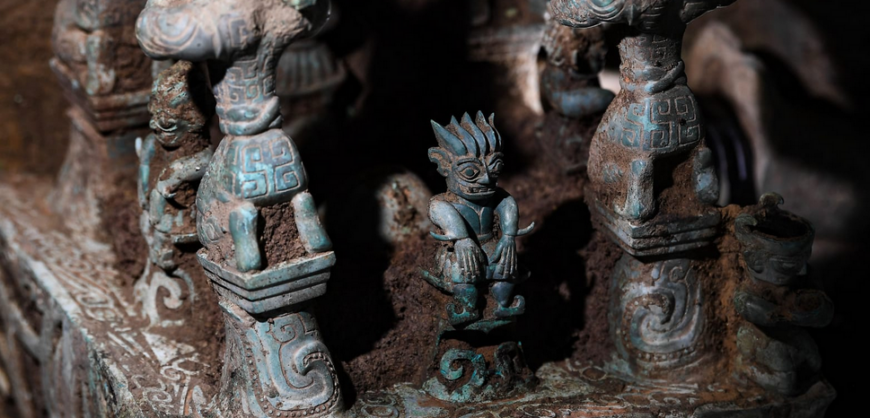Archaeologists in Sichuan Province, China announced this week they have uncovered evidence of ancient efforts to commune with fairies. A cache of bronze, jade, and gold artifacts as well as evidence of ancient sacrificial rituals were unearthed. Some of the artifacts, scientists said, are one-of-a-kind objects that hint at the “fairy world” of ancient Chinese religion and thought. But if you’re picturing folk religion and Tinkerbell, think again.
The discoveries were made at the famous Sanxingdui archeological site in the city of Guanghan in the southwest of Sichuan Province. The veritable treasure trove was excavated from sacrificial pits 7 and 8 by a collaborative team of academics from Peking University and Sichuan University. Among the items was a bronze and green jade box that was embellished with dragon head handles and was once kept wrapped in silk. Professor Li Haichao, of Sichuan University who directs pit 7, told Chinese news agencies that, “It would not be an exaggeration to say that the vessel is one of its kind, given its distinctive shape, fine craftsmanship and ingenious design.”
Huge 11 mile-wide comet to pass Earth next week
The collection of complex sculptures includes mythical creatures, human-snake hybrids, and bronze heads decorated with gold masks. The iconographic program of the sculptures, which were primarily located in pit 8, is “complex and imaginative.” Zhao Hao, as associate professor at Peking University, said that they reflect “the fairy world imagined by people at the that time, and they demonstrate the diversity and richness of Chinese civilization.”
Read more: The Daily Beast
































